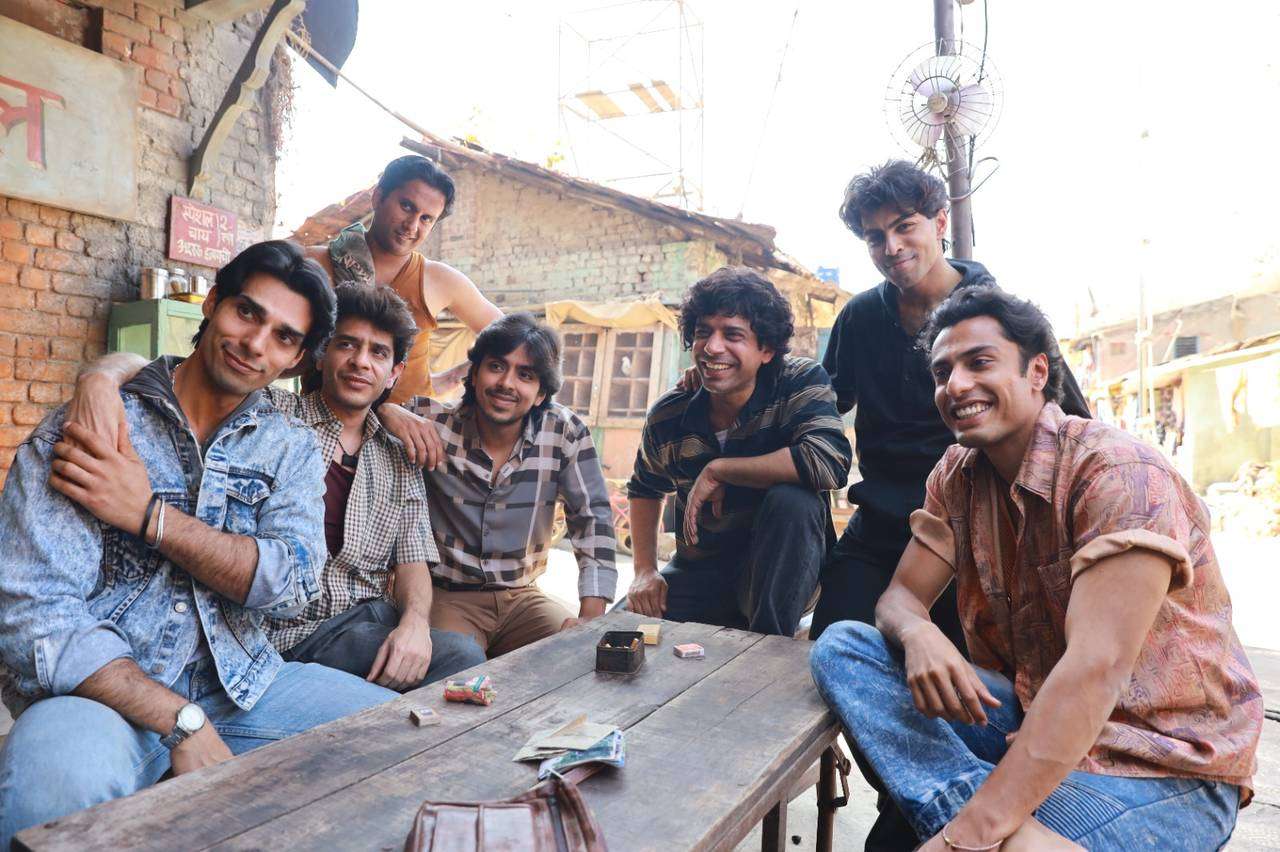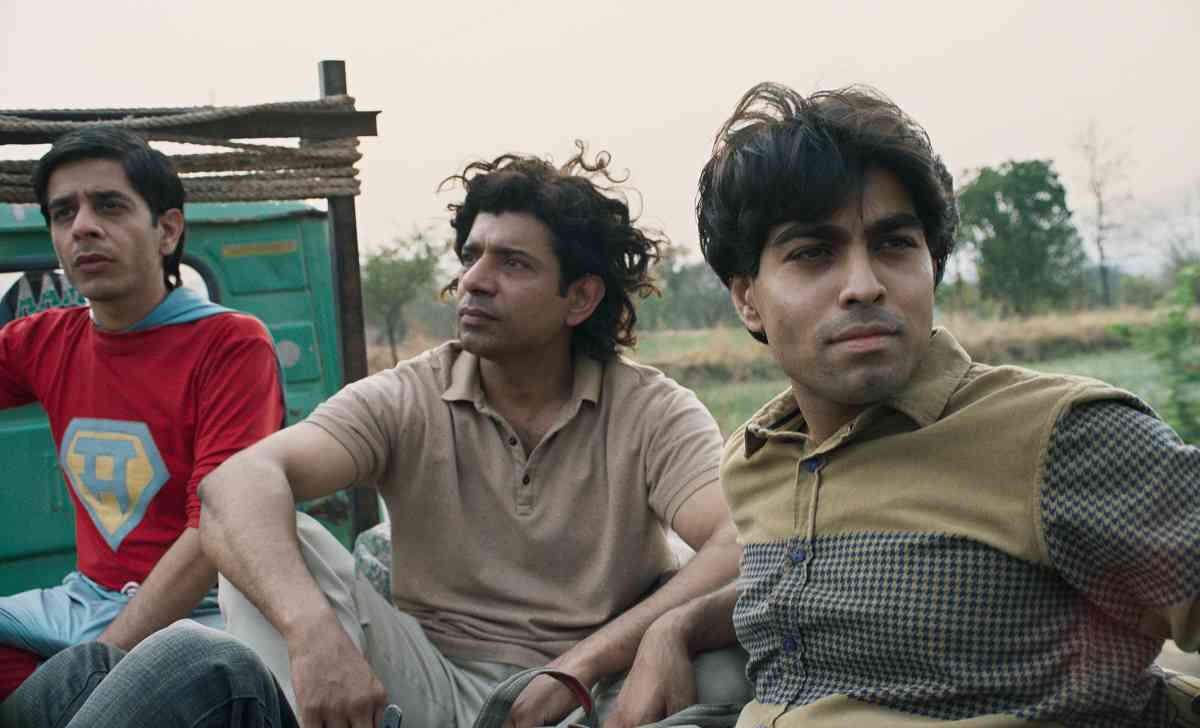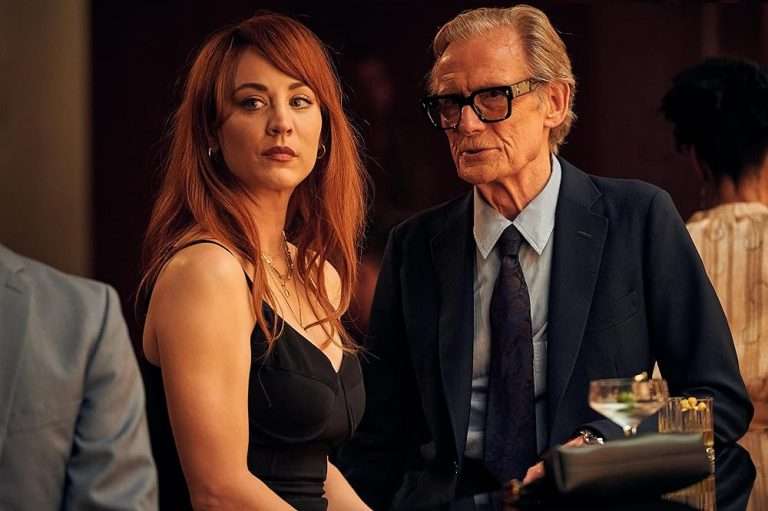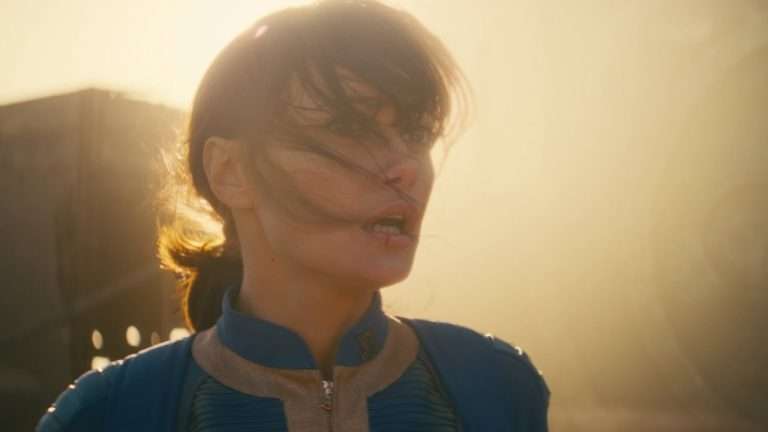Shot in Nashik, Reema Kagti’s “Superboys of Malegaon” opens with a wistful ode to Malegaon—a town steeped in nostalgia. Its narrow lanes stir with morning chatter, while sunlit ’90s architecture, softened by dust-laden interiors, bears witness to time’s passage. Chai thelas dot the street corners, anchoring the film in the quiet, unhurried rhythm of daily life. The primary intent of this article—perhaps more aptly characterised as an opinion piece or reflective essay—is directed more toward Faiza Ahmad Khan, Nasir Shaikh, and their team than Reema Kagti and hers.
This is not to understate Kagti’s achievement, as “Superboys of Malegaon” carries an undeniable sincerity, a testament to the fact that it was crafted with genuine care rather than mere commercial ambition. Rather, my focus here is to illuminate the phenomenon of Mollywood, a world both Kagti and Khan seek to honour in their work. As “Superboys of Malegaon” arrives on Indian OTT platforms (Amazon Prime) on April 25, 2025, I write this as an earnest appeal to audiences to not only watch and support the film but also to explore Faiza Ahmad Khan’s work and the wealth of independent Mollywood cinema available on YouTube.
Supermen and Superboys: On Memory, Legacy, and Cinematic Ownership
A particularly vivid memory I have of Faiza’s “Supermen Of Malegaon” is watching it during our documentary classes in film school, frantically taking notes, and realizing that nothing could possibly supersede this. To now witness Nasir at TIFF for a commercial film based on his life and work is, to me, utterly mind-boggling. Like many others, I found myself pondering the intent behind Kagti’s “Superboys of Malegaon” when it was first announced, despite the rights being secured long ago. Many, including myself, asked: What is the necessity of this film when a documentary on the subject already exists?
The prospect of a commercial Bollywood adaptation—whether a reinterpretation of Faiza’s documentary film or a tribute to Nasir— felt inherently unsettling, as it risked appropriating, diluting, or distorting the essence of Mollywood’s fiercely independent, self-sustained cinematic voice, one that neither belongs to the industry’s mainstream culture nor seeks to. Would such an adaptation compromise the very spirit of the original? Would it reduce Nasir’s world to an aesthetic choice rather than the lived reality it represents?
“Supermen of Malegaon” by Faiza Ahmad Khan is largely unknown to mainstream Indian audiences. Having been released almost thirteen years ago, it remained primarily within the consciousness of cinephiles, film scholars, and those who have engaged with documentary filmmaking in an academic or professional setting. Kagti’s adaptation, then, serves as an introduction—an opportunity to bring Nasir and his collaborators into a broader public view as some of them continue to make Mollywood films.
In the documentary, as well as in the film, the town’s economy is sustained by power loom mill workers, whose Fridays are reserved for cinema—Video theatres and video parlours serve as portals, allowing a brief respite from the grind, a ritualistic immersion into the fantasy of films. This is Mollywood, as they call it, where cinema is not merely entertainment but a pervasive presence. Film posters find their way onto tablecloths and kites, photo booth cutouts and even hairstyles that mirror Bollywood’s reigning figures like Shah Rukh Khan and Sanjay Dutt.
In Reema Kagti’s rendition, the tradeoff for retelling a story involving filmmakers so coloured by communal disharmony without focusing on the same feels like a convenient omission of integral context. Much of which the documentary never leaves track of: “A river that separates Muslims and Hindus. But they love films, both sides.” This line, simple yet weighted, captures both the stark divide and the fragile thread of unity that binds the town’s people.
From Documentary to Drama: Translating a Local Legacy to the Big Screen

What makes Reema Kagti’s “Superboys Of Malegaon” remarkable is its inversion of influence—From alluding to Ramesh Sippy, Charlie Chaplin & Buster Keaton as inspirations, Nasir has spent years parodying films inspired by mainstream blockbusters solely to cater to his Malegaon audience. Yet, for the first time, through immense poetic justice, he now finds his legacy reflected in a commercial Bollywood production.
This, in essence, feels like the industry’s way of acknowledging and reciprocating his deep-rooted cinephilia. It is not merely a nod but a fitting tribute to Nasir, elevating him beyond Malegaon into the global cinematic sphere. “Superboys Of Malegaon” presents itself with a polished and clean visual language, reminiscent of commercial cinema, smoothing over the very elements that made Mollywood distinctive—its jagged cuts, imperfect sound design, and comedic slip-ups. Yet, Mollywood’s spirit persists and shines in its story and dialogues, crafted by local writers in their own contexts and dialects. On the big screen, however, it lacks the overall nostalgic weight of the documentary, which remains the superior tribute.
Adarsh Gourav’s portrayal of Nasir Shaikh is shaped by his pivotal role in ending Nasir’s filmmaking hiatus. As the producer of Nasir’s comeback film, he later reflected on this approach in an interview for Radio Times, wanting to witness Nasir in his element while closely studying production, location scouting, and script development. This firsthand engagement lent his performance an authenticity that feels both meticulous and deeply respectful of independent cinema. His performance is a testament to his chameleonic talent, evident in “The White Tiger” and “Kho Gaye Hum Kahaan,” as he navigates a plethora of roles as someone whose love for films deeply exists and shows.
Shashank Arora, portraying Shafique, seamlessly balances naïveté and unwavering faith in both Nasir and the art of filmmaking itself. A devoted Amitabh Bachchan fan, his yearning to achieve something monumental encapsulates the very essence of artistic existence—the desire to create something that outlives its maker. “Supermen of Malegaon” immortalizes Shafique’s spirit, fulfilling his final wish and propelling him onto the world’s biggest cinematic stage. Once a dreamer who gazed at planes overhead, he now soars beyond the very limits he once longed to transcend, enshrined forever in cinematic memory.
Also Read: Superboys of Malegaon (2025) Movie Review: A Love Letter to Cinema and All Its Attributes
Another notable omission in “Superboys Of Malegaon” is the dynamic between brothers Nadeem and Nasir—both ardent cinephiles, yet Nasir adamantly refuses to let Nadeem be drawn into filmmaking. The documentary, too, offers little clarity on this contradiction. Nasir calls filmmaking an affliction, something he must shield his brother from, confessing, “I’m getting sucked in deeper and deeper” and lamenting the futility of wasting money on an uncertain future. His rationale, though stated, feels incomplete, leaving me with the sense that there is more to the story than what is revealed in both films.
A standout presence in the original documentary, and my personal favourite, is Akram—played by Anuj Singh Duhan, who is a natural performer, a one-man spectacle whose magnetism is impossible to ignore. The casting is nothing short of perfect. Yet, in Reema Kagti’s adaptation, the sheer force of Akram’s personality as a writer, music composer, voiceover artist, actor, director, and editor is inevitably compressed, a trade-off that leaves him somewhat shortchanged in the fictionalized retelling. Muskkaan Jaferi’s portrayal of Shabeena and the husband-wife dynamic with Nasir builds a relationship that is as tender as it is quietly radical.
As the producer of Malegaon Ka Superman, Shabeena places unwavering faith in Nasir, mirroring his steadfast encouragement of her aspirations in law. This subtle yet profound exchange of trust and companionship is rare, adding crucial depth to Nasir’s grounded disposition and the inner resilience that fortifies him against life’s many setbacks. Similarly, Manjiri Pupala’s Trupti is a force—the archetype of the comic diva who can’t be ignored. Yet, the film refuses to let her be defined by tragedy alone. Instead, it grants her warmth, sass, and an undeniable self-assurance, making her presence on screen never disgusting but always invigoratingly refreshing.
Between Independence and Industry: Navigating Creative Agency in Malegaon and Mumbai

Despite “Superboys of Malegaon” being rooted in the fabric of Malegaon, I found myself reflecting more on the mythos of Mumbai—the city long fabled as the ultimate proving ground for filmmakers. Yet, reaching Mumbai demands surrendering a lot, with no guarantees in return. Nasir Shaikh, however, embodies a rare balance of pragmatism and creativity, never wishing to go to Bombay or sacrificing firsthand creative control over his films by working under anyone. The genesis of his filmmaking, rooted in solving the technical issue of piracy rather than an intrinsic artistic pursuit, is particularly fascinating. His craft began as a necessity and evolved into a passion, but what is most striking is his self-sufficiency.
Nasir’s ability to navigate filmmaking independently—securing funding, mastering camera work, and handling distribution—led me to question whether such autonomy is even conceivable in Mumbai. The city is, in reality, an unforgiving landscape— cutthroat, unpredictable, and riddled with uncertainty. Vineet Kumar Singh, as Farogh, becomes a vessel for the existential turmoil of a struggling screenwriter in Mumbai, embodying the very angst that Varun Grover articulates—the relentless pursuit of recognition amid the bruising political scenario and indifference of fate.
The film echoes Farogh’s lament from the documentary: the agony of being a writer lies in the cruel imbalance between creation and articulation—only twenty percent of one’s vision materializes on the page, while the remaining eighty percent lives in its perpetual, unrealised potential. Through Nasir and Farogh, “Superboys of Malegaon” subtly navigates the constant tension between arthouse and mass-market cinema, interrogating the very notion of originality. The film also wrestles with the commercial realities of independent filmmaking—the uneasy yet inescapable compromise between artistic integrity and financial sustenance. Advertising, often dismissed as a corrosive force in storytelling, is met with particular disdain.
The documentary itself captures how Mollywood, Malegaon’s microcosmic film industry, survives itself through hyperlocal sponsorships—Ismail Matchsticks, Rima Soap, and Lalle Milk Centre all serving as reluctant yet essential patrons. Nasir, ever the pragmatist, views these compromises as necessary evils, minor sacrifices for the mere possibility of creation, while Farogh recoils at the idea of polluting his art with commerce. This ideological clash underscores the existential dilemma of independent cinema, where dreams must often be bartered for survival.
Yet, in one of the film’s most powerful moments, Vineet Kumar Singh improvises a line that cuts through the debate with searing clarity: “Writer baap hota hai.” The weight of those words, delivered in a moment of raw exasperation, is nothing short of electric. So, is Mumbai truly the apex of filmmaking? Must one be in Mumbai to create films? The answer is a resounding no. While some embrace the Mumbai struggle to “make it out” of hardship, others choose to struggle differently. Prioritising the creative struggle and obstacles in their craft over the exhausting Mumbai rat race, away from exorbitant rents, endless waiting, and the ceaseless grind for recognition.
Filmmaking as Tribute: Collaboration, Memory, and the Emotional Labour of Creation
This film stirs something deeply personal within me, bringing back my film school days—the exhilaration of creating with friends, the late-night discussions, the shared frustrations, and the small victories that felt monumental. The volatile dynamics of collaboration—grappling with conflicting artistic visions, negotiating unspoken hierarchies, failures, and, above all, confronting the fundamental question: Why do we make films?
Filmmaking is never a solitary endeavour, it is sustained by the passion and dedication of friends who make it possible. The true reward lies not only in the final product but in the very process of ideating, sourcing, spending time, and sharing ideas—a labour of love that transforms into something far greater than ourselves. Honouring one’s friends through one’s work is perhaps the most gracious opportunity and luck to be bestowed upon a filmmaker, rewarding the resilience that sustains independent cinema.
The film’s climax left me in shambles, striking at the very core of why I create. I, too, want to make films for and through my friends—for the unspoken understanding, countless sacrifices, and the shared pursuit of storytelling. If life permits, I would consider it a privilege to pay tribute to my friends on screen as did Nasir Shaikh. As Bande by Sachin-Jigar plays, Malegaon witnesses its first cinematic flight—Shafique soaring over the town, carrying the wonder of chroma key into Mollywood for the first time.
In closing remarks, the sincerity of the film’s intent is undeniable; yet, its execution personally does not nearly match its ambition. Even so, if not for Reema Kagti or Faiza Ahmad Khan, “Superboys of Malegaon” (2025) and “Supermen Of Malegaon” (2012) remain deserving of far greater viewership by Indian audiences than they are currently receiving, for Nasir and all the aspiring and existing independent filmmakers he stands as a testament for.





![Taxi Driver [1976] : An Existential Ride](https://79468c92.delivery.rocketcdn.me/wp-content/uploads/2019/06/Taxi-Driver-An-Existential-ride-High-on-Films-1976-768x433.jpg)




